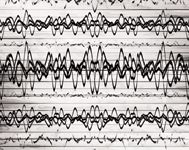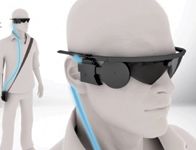Top Medical Innovations for 2014
At the conclusion of the Cleveland Clinic's Medical Innovations Summit each year, 10 innovative technologies are unveiled before the audience, and designated as new and revolutionary tools for the treatment of disease and disability.
At the conclusion of the Cleveland Clinic’s Medical Innovations Summit each year, 10 innovativetechnologies are unveiled before the audience, and designated as new and revolutionary tools forthe treatment of disease and disability. Selections for the Top 10 are chosen by way of a processthat includes personal interviews with over 100 senior Cleveland Clinic physicians. Here are a fewof the technologies that made the cut for 2014.
RELAXIN FOR ACUTE HEART FAILRE
TOP 10 RANKING: #7
WHAT IT'S FOR: DRAMATICALLY IMPROVING HEALTH OUTCOMES IN HEART FAILURE PATIENTS
Why it's needed: Heart failure is the number one cause of hospital admission. One in five patients with heart failure are readmitted to the hostpital within 30 days, and 10 percent die during the same period.
How it works: In women, relaxin-2, a naturally-occuring hormone, helps loosen tissues in the reproductive organs and pelvic ligaments to help prepare for childbirth. In heart failure, Novartis's serelaxin, a synthetic version of relaxin-2, functions as a vasodilator with anti-inflammatory properties capable of increasing blood flow in the body, which helps a poorly functioning heart work more effectively. It also prevents organ damage related to reduced blood flow in the kidneys and liver, and helps resolve fluid buildup in the lungs. Phase III data from the serelaxin trial reported a reduction in death rates by 37 percent, six months after therapy. If approved, serelaxin will become the first meaningful treatment for heart failure in two decades.
RESPONSIVE NEUROSTIMULATOR FOR INTRACTABLE EPILEPSY
TOP 10 RANKING: #3
WHAT IT'S FOR: SIGNIFICANT FREQUENCY REDUCTION OF EPILEPTIC SEIZURES
Why it's needed: Roughly one million Americans have epileptic seizures that won't respond to therapy or medication.
How it works: A neurological device is surgically implanted under the skin. Once implanted, the device records electrocorticographic (ECog) patterns through leads containing electrodes that are placed at the patient's seizure focus in the brain, or on the surface of the brain where seizures start. When detection thresholds are met, the device delivers short electrical pulses to interrupt the triggers before any seizure symptoms can occur. In a pivotal clinical study, the device reduced seizure frequency by 40 percent, compared to a 17 percent reduction in a placebo group. Long-term results demonstrated sustained improvements in seizure frequency post-implant. Additionally, physicians can use the data captured by the device to customize the system's electrical impulses for individual patients.

FECAL MICROBIOTA TRANSPLANTATION
TOP 10 RANKING: #6
WHAT IT'S FOR: SAFE AND EFFECTIVE TREATMENT OF DANGEROUS C.DIFF INFECTIONS
Why it's needed: Half a million cases of C.diff are reported in the United States annually, along with 15,000 deaths.
How it works: The human gut contains more bacterial DNA than human DNA, and the stool is biologically active. In fecal microbiota transplantation, C.diff patients that don't respond to antibiotic therapy, a colonoscopy or enema is used to transfer a liquid suspension made from a healthy person's fecal matter into a sick person's colon, in order to restore bacterial balance and cure C.diff. Results of the procedure have been extraordinary, with some patients being cured of their symptoms within 24 hours, with no recurrences. The procedure may also be effective in treating inflammatory bowel disease and other nongastrointestinal conditions, like Parkinson's.
RETINAL PROSTHESIS
TOP 10 RANKING: #1
WHAT IT'S FOR: RESTORATION OF SIGHT
Why it's needed: More than 100,000 people in the United States have retinitis pigmentosa, a disease that leads to blindness. Until recently, there has been no effective treatment.
How it works: The Argus Retinal Prosthesis, approved in the United States in 2013, combines a surgically implanted 60-electrode retinal prosthesis that receives signals from a pair of external video camera-enabled glasses with a video processing unit that is worn at the waist or carried. The retinal system works when the video unit transforms images from the miniature camera into electronic data that is wirelessly transmitted to the device in the eye, which contains an antenna and electrodes that replace the degenerated cells in the retina. At that point, the data are transformed into small electrical impulses that stimulate the retina's remaining inner neurons. Also known as the "bionic eye," some blind patients have been able to read the blind chart using the prosthesis.

Cell and Gene Therapy Check-in 2024
January 18th 2024Fran Gregory, VP of Emerging Therapies, Cardinal Health discusses her career, how both CAR-T therapies and personalization have been gaining momentum and what kind of progress we expect to see from them, some of the biggest hurdles facing their section of the industry, the importance of patient advocacy and so much more.
Applying Porter’s Five Forces to Portfolio Management in Pharmaceutical R&D: A Strategic Roadmap
March 17th 2025The increasing costs and complexity of R&D in the pharmaceutical industry have necessitated the adoption of strategic portfolio management to optimize resource allocation and enhance competitive advantage.
